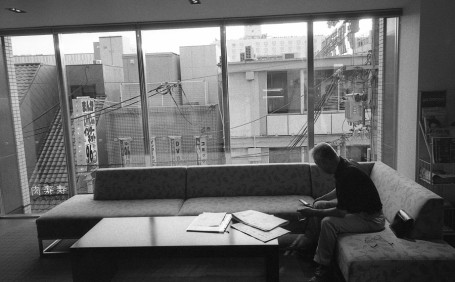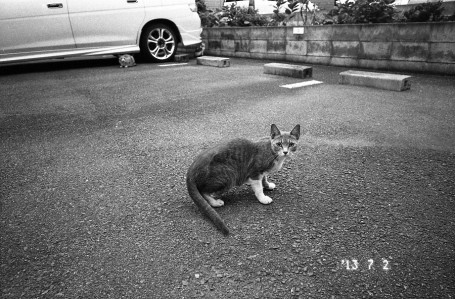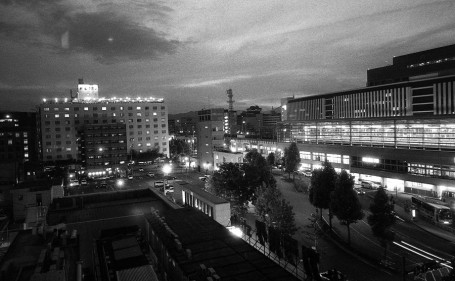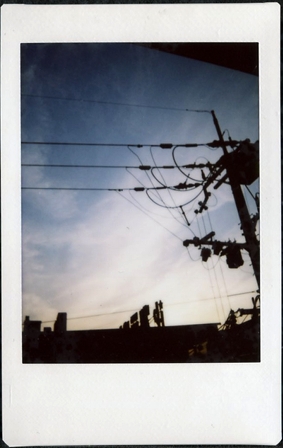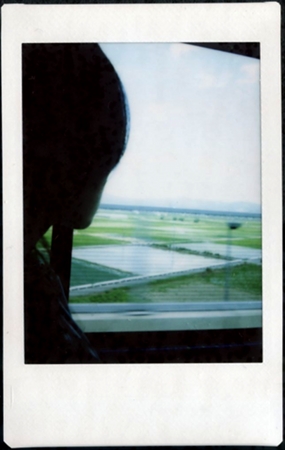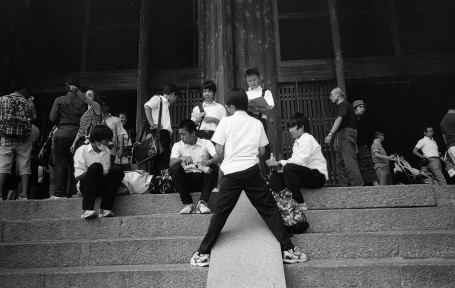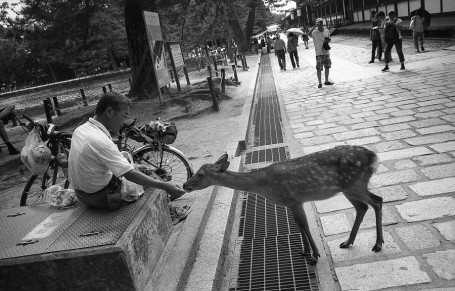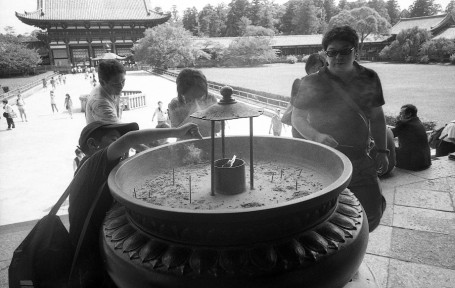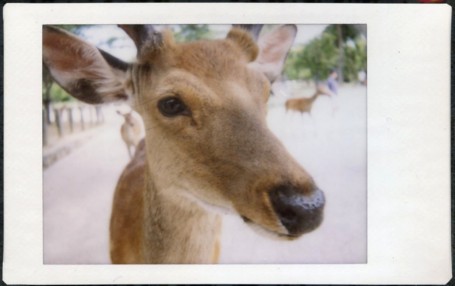京都と奈良についての第一印象
By Matt Wong
The city of Kyoto (京都) is difficult to write about because it can be perceived in drastically different ways, depending on the individual and his or her present circumstances. For instance, I’ve read passages by a few Tokyo natives who felt that Kyoto offered an escape from the dirty, gritty atmosphere that characterized their hometown. On the other hand, some other Tokyo-dwellers feel that Kyoto doesn’t have the lively, urban charm of Japan’s current capital.
Of course, as an American student, my impression of Kyoto is quite different from that of either Tokyo or Kyoto natives. It is also quite limited in scope, as I haven’t lived in either location long enough to make hasty generalizations about their differences. That being said, there are several characteristics beyond the obvious historical differences that stood out to me about Kyoto.
Firstly, the main streets of the city seem a bit more spread out, and there are more large trees. It might be my imagination, but I also felt that the sky in Kyoto is more open, often filled with dramatic light and clouds. On the other hand, residential areas are composed of narrow, neat streets (roji, 路地) packed tightly with houses and small shops, most of which make liberal use of wood on their exteriors, as well as several small potted plants in various shapes and sizes, metal mailboxes, and an endless assortment of signs, vending machines, statuettes, and posters. One morning, while wandering around with no destination, I stumbled upon some stray cats (noraneko, 野良猫).
After they got bored of playing with me, two of the cats took shelter under a parked car, and the smallest one—a tortoiseshell with a striped tail—hid behind a potted plant in front of a house, where an elderly woman emerged and fed it some breakfast. We exchanged smiles and agreed that the cats were cute. After she went back inside and the kitten joined its family under the parked car, I took a closer look at the front door—the woman had left a small bowl of water placed alongside some perfectly trimmed potted plants for the animals to drink. Other plants (the only one I could recognize was hydrangea (ajisai, アジサイ)), were also neatly arranged around the house. This woman had clearly spent a great deal of time and energy in making the tiny place her own, and keeping it orderly and clean. Of course, it wasn’t just her—the whole city was maintained in a similar fashion. Every shop owner and home owner seemed to take pride in both the upkeep of their property, as well as in being friendly to guests and the people around them.
I suppose I spent my few days in Kyoto mesmerized by the beauty of literally everything—the people, buildings, streets, sky—even the ground, which was neatly paved and, after the summer rain, glistened brilliantly.
Even now, perhaps the strongest image that still lingers in my mind are the hundreds of thick telephone wires that run in every direction from rooftop to rooftop, which from the ground stand out as stark silhouettes against the deep blue sky, painted orange in the west by a fiery setting sun—a perfect harmony between Heaven and Earth. I had never seen such a place before, or experienced such a profoundly peaceful atmosphere. Despite my limited knowledge and experience, I felt that to live to an old age in such a place must be the closest thing to paradise that a person could find.
As for some descriptive characteristics of the residents themselves, there are a lot more people riding motorized scooters, which are rather uncommon in Tokyo. People dress a bit less formally. I calculated that between 8 to 9 out of 10 women in Tokyo wear high heels, but this ratio is much lower in Kyoto. It’s still rare to see somebody wearing a T-shirt, jeans, and sneakers (unless they’re a tourist), but there are far fewer salarymen in full suits running around, and almost no “troublemaker” looking types. As Kyoto is home to several universities and has a 10% student population, the city has a much more relaxed atmosphere than Tokyo, which is congested with people of all ages rushing to and from countless activities, occupations, etc., 24 hours a day.
Kyoto is close to Nara, and our group was in both locations within the same day, which is why I’m discussing both places here. The bus ride to and from Nara is beautiful itself—wispy clouds of mist hover above lush green fields, some covered in water from rain, and small buildings dot the landscape.
Only one event during our stay in the Western region of Japan failed to elate us. For some reason, our tour guide decided to show us a movie on our return trip from Nara to Kyoto about Kelly Osbourne (daughter of Ozzy Osbourne) working questionable jobs in Japan (Maid Café, Love hotel, Samurai, etc.), all the while offending everyone around her by bashing Japanese society and dropping F-bombs (in English). We were all bewildered that such a movie existed, and even more so that it was being shown to us. I swore never to listen to Black Sabbath again.
Nara is much smaller than Kyoto, but there are many tourists from within and outside of Japan who come to see the famous wild deer, which are everywhere, and live in harmony with the people. It is true that Kyoto is also a popular tourist location for its many beautiful historical sites (the reason why it was not destroyed during World War II), but I must admit that I was most preoccupied by the deer. As many groups of schoolchildren visit Nara, the city has a youthful, cheerful, and innocent atmosphere. Combined with the rich, ancient, and well-preserved culture, I felt that Nara was an ideal example of how the past can exist in tandem with the younger, modern world.
On my last night in Kyoto, I saw a dirty pigeon wandering around in the bullet-train station, which is a rare occurrence in such a massive, sleek, modern building. I took a picture to remember the occasion. At first I thought it was a funny sight, but now, looking back, I’m filled with the strange wish that I could become that pigeon so that I could roam around in Kyoto happily for a little bit longer. While all 14 of us students received different impressions of the city, I think we would all be happy to return one day. I certainly would.

